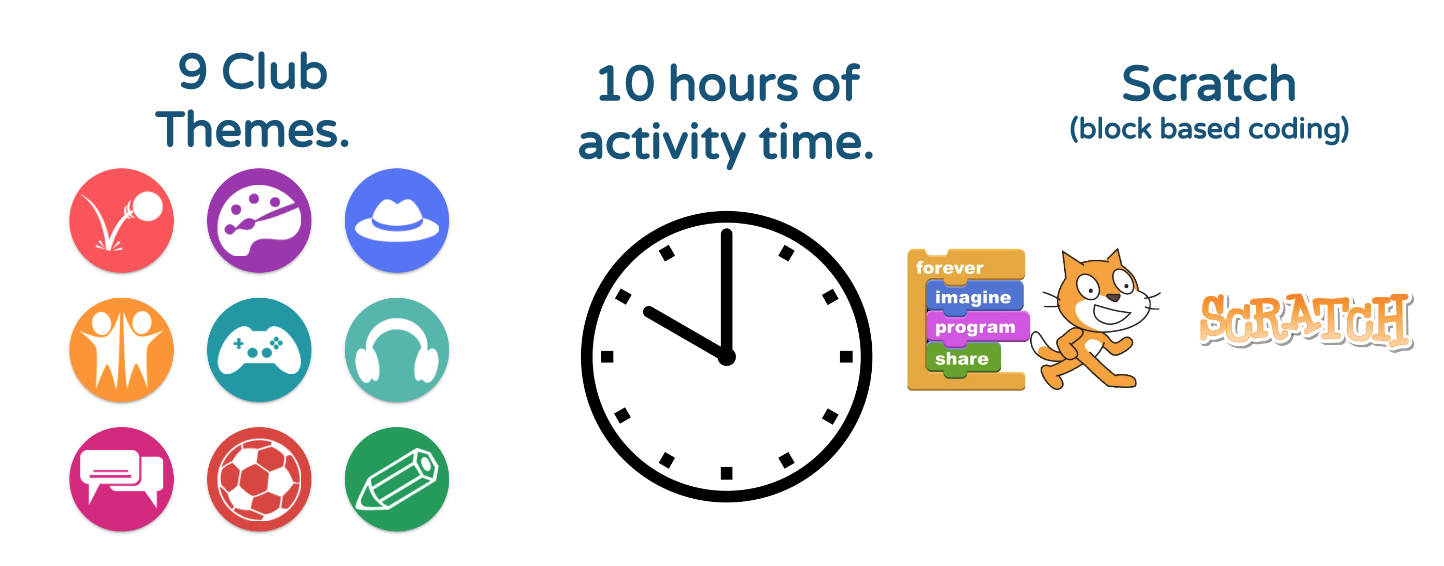
Google CS First is a computer science coding club that is run through you and your students’ SD61Learn Google account. Google has created a portal that you and your students will log into that keeps everything organized and holds all the content. There are 9 different themes like storytelling, animation, fashion and sports. Each club takes about 10 hours. Students will code using Scratch and can access everything on district Chromebooks.
How to get started?
Go to Google CS First and sign in or click on “Start a Club Now.” Click on the “Start a New Club” button and follow the prompts. It takes 5 minutes and you will:
- Pick a theme
- Create a schedule
- Print materials
- Bonus: Find a Guru which is someone who will help you during the sessions. Consider another teacher, a parent, older student volunteers.
Promote your club by putting up posters that are provided once you have picked your theme. Consider having an information meeting where you can show the slides below. Be sure to personalize and edit the slides before the meeting. Click on the image to see the Google Slides:

Tip: Be sure to think carefully about the schedule. Do not just put in random dates. This is because the activities are linked to the dates. When students login, they will get the activity assigned for that date. So if your first club meets on Monday, December 12th and if you correctly entered December 12th in the schedule then students will login and get the Day 1 activities. If you get these wrong, kids will be looking at the wrong activities.
What does a typical club meeting look like?
Clubs could ideally run once or twice a week, either after school or at lunch. In one club example, 20 students came to the library twice per week from 2:45-3:45pm and logged into a Chromebook with their Google CS First username and password provided by the club (these are generated automatically and can be reused if kids join another club). Once all the coders had arrived, here is what the day looked like:
- Showcase Selector: Two activities get randomly selected at the end of the last club meeting. Start each time with looking at two students’ Scratch projects.
- Self-Paced Learning: Students then work at their own pace watching videos and working in Scratch. The leader and guru (the adults running the club) circulate to help students.
- Wrap Up Video: End the club by collectively watching the Wrap Up video. Every day has a video that recaps the key computer science concepts and relates those concepts to the real world and real people’s jobs. Watch these as a group, though you could have kids watch on their own too.
- Showcase Selector: The last task is to do the Showcase Selector to pick two projects to kick off the next club meeting.
Tip for Success: Emphasize Collaboration
It’s easy for students to plug in and engage with the club activities in isolation. This in fact may even be their preference as many students who would be interested in this may not have well-developed collaboration skills. It’s key to emphasize more collaboration and team work. Not only does it ease the burden on the group leader to have all the answers, it’s also much more representative of real-life situations within the tech-industry. Collaboration and communication skills can be equally as important as technical skills. It’s worth stopping every 10 minutes to have students talk to the person next to them. More time to share more projects and get students to give each other feedback will benefit everyone.



